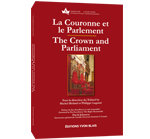 In 2011, the Queen and the Commonwealth Heads of Government met in Perth, Australia for the Commonwealth Heads of Government Conference. All sixteen Commonwealth realms agreed in principle to succession reform that would introduce absolute primogeniture. The monarch’s eldest child, male or female, would succeed to the throne. The succession reforms also addressed the 1701 Act of Settlement, which did not allow those married to Roman Catholics to retain their succession rights and the 1772 Royal Marriage Act. which required the descendants of King George II to receive the monarch’s permission to contract a valid marriage. The introduction of gender of equality in the British and Commonwealth monarchies followed the trend established by the other European monarchies but succession reform proved to be far more complicated for the House of Windsor.
In 2011, the Queen and the Commonwealth Heads of Government met in Perth, Australia for the Commonwealth Heads of Government Conference. All sixteen Commonwealth realms agreed in principle to succession reform that would introduce absolute primogeniture. The monarch’s eldest child, male or female, would succeed to the throne. The succession reforms also addressed the 1701 Act of Settlement, which did not allow those married to Roman Catholics to retain their succession rights and the 1772 Royal Marriage Act. which required the descendants of King George II to receive the monarch’s permission to contract a valid marriage. The introduction of gender of equality in the British and Commonwealth monarchies followed the trend established by the other European monarchies but succession reform proved to be far more complicated for the House of Windsor.
While the sixteen commonwealth realms agreed on the importance of gender equality, reopening the question of the royal succession demonstrated the difficulties of sixteen commonwealth realms with different relationships with the monarchy passing similar legislation. In the United Kingdom, succession reform was criticized for not taking into account the land holdings that have traditionally passed to the heir to the throne through male preference primogeniture. In Australia, succession reform demonstrated the independence of the states in a federal system as Western Australia became the last region of the commonwealth to pass a royal succession bill before the changes came into force. In Canada, the government’s decision to assent to the British succession legislation rather than formulate its own reform legislation was controversial and is currently facing a court challenge.
La Couronne et le Parlement/The Crown and Parliament, which emerged from the May 2014 conference by the Canadian Study of Parliament Group is an essential resource for the debate concerning succession reform in Canada. The four chapters in the book concerning succession reform address all sides of the debate. Anne Twomey’s chapter, “The Succession to the Crown of Canada” is particularly fascinating as it compares Canada’s approach to succession reform to the changes enacted in other Commonwealth realms and compares modern succession reform to the Dominion response to the Abdication crisis of 1936. In the chapter on “The Crown and Constitutional Amendment” in Canada, Philippe Lagassé and Patrick Baud examine Section 41a of the Constitution Act of 1982, which concerns changes to the office of the queen, looking at the implications of the various interpretations of this passage for succession reform and the broader role of the Crown in Canada. In contrast, Mark D. Walters and The Honorable Serge Joyal discuss the Canadian assent to British succession reform legislation in successive chapters, discussing crown identification and the development of the constitutional monarchy in Canada.
In addition to explaining all sides of the Canadian debate on succession reform, the essays in La Couronne et le Parlement/The Crown and Parliament provide important historical and political context for the modern relationship between the Crown and Parliament, beginning with an overview of the history two institutions by André Émond. Political innovations that reflected the circumstances of individual reigns set established precedents in the relationship between Crown and Parliament. For example, prior to the reign of Henry VIII, royal assent was granted by the monarch in person at a ceremony where the entire text of a bill was read aloud. That changed in 1541 when Henry VIII expressed reluctance to give personal royal assent to the Bill of Attainder that condemned his 5th wife, Catherine Howard to death. The result was a new process of granting royal assent to legislation, royal assent by commission.
As David Smith, author of The Invisible Crown: The First Principle of Canadian Government observes in his chapter about Parliament and the Crown, there is a divide between public perceptions of the Governor General’s position and the constitutional role of the Crown. La Couronne et le Parlement/The Crown and Parliament bridges this divide by bringing together a broad range on scholarship on Canada’s political institutions. The book is essential reading for any Canadian who wants to learn more about the crucial relationship between the Crown and Parliament.
